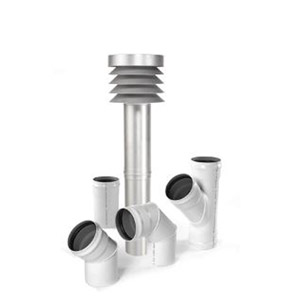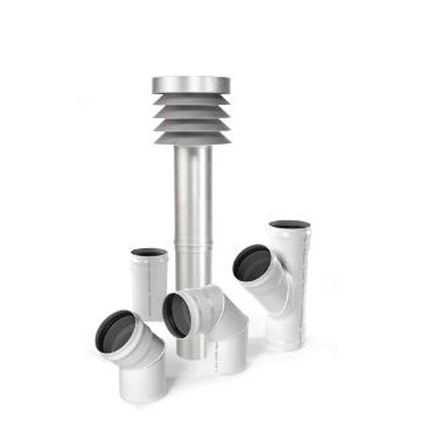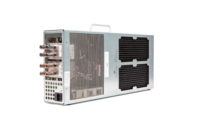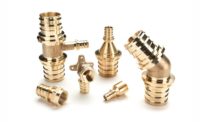 REHAU’s ECOAIR™ ground-air heat exchange systems promote improvedIAQ.
REHAU’s ECOAIR™ ground-air heat exchange systems promote improvedIAQ.
REHAU has released its ECOAIR™ ground-air heat exchange system, designed to deliver improved indoor air ventilation, enhanced energy efficiency and increased comfort in alignment with the fresh air requirements of today’s tighter, more energy-efficient residential and commercial building envelopes.
The REHAU ECOAIR system takes advantage of consistently moderate ground temperatures to pre-condition incoming fresh air, thus improving indoor air ventilation while also reducing heating and cooling costs. Prior to entering the indoor ventilation system, fresh air is pre-warmed with ground heat 5 to 7 ft (1.5 to 2 meters) below the earth’s surface in winter, and pre-cooled with cooler ground temperatures in summer. In addition to directly reducing the energy required to heat or cool incoming fresh air, the system provides a number of benefits to overall ventilation system optimization. It can be designed to lower relative humidity during periods of cooling, and eliminate defrost cycles in heat recovery ventilators (HRV), ensuring a continuous supply of fresh ventilation air. During the defrost cycle, an HRV supplies heat to defrost the heat exchanger or goes into a recirculation mode during which fresh outside air is not being supplied to the building.
“With national energy codes such as ASHRAE 90.1 encouraging tighter building envelopes, bringing in outside air via controlled ventilation has become crucial to ensuring good indoor air quality,” said Mike Dietrich, business team manager, building technology at REHAU. "As part of a balanced air ventilation system, a ground-air heat exchanger like REHAU ECOAIR can make a considerable contribution to the overall efficiency of a building’s space conditioning systems.”
“For instance,” Dietrich explained, “the system requires only a small amount of electrical power to operate an air intake fan, and provides notable energy cost savings by reducing the amount of energy needed for heating and cooling –especially when used in conjunction with heat or energy recovery ventilators. It is in fact possible for a ground-air heat exchange system to assist in raising intake air temperature by up to 16°F (9°C) during colder months, and reducing it by up to 29°F (16°C) in the summer. The energy output can be similar to solar PV with a significantly reduced investment.”
The REHAU ECOAIR ground-air heat exchange system is comprised of an air inlet, filtering and condensation management components, rigid PVC pipe and fittings. The system’s smooth-walled pipe offers good heat conductivity to promote exceptional ground-to-air heat transfer, while also facilitating effective condensation discharge. It also has a unique inner layer developed by Agion Technologies that capitalizes on the naturally occurring properties of silver to inhibit microbial growth. Agion’s silver antimicrobial has been tested and verified to ASTM Standard E2180, and is additionally registered with the EPA for use as an antimicrobial in HVAC applications.
“The potentially moist environment in a ground-air heat exchange system’s pipe can be conducive to microbial growth,” said Dietrich. “In addition to allowing for condensate drainage and inlet-air filtration, we have partnered with Agion to incorporate a silver-enabled antimicrobial lining in our REHAU ECOAIR pipe. Our work has fostered a unique solution in ground-air heat exchange that delivers controlled, filtered ventilation while providing notable HVAC system energy savings.”
A range of components and fittings is also available, providing flexibility in designing REHAU ECOAIR ground-air heat exchange systems for a variety of project sizes from single-family homes to light commercial applications. Fittings include elbows, wyes and couplings to allow for the installation of grid, serpentine and ring pipe configurations. An integrated sealing system ensures that the complete ground-air heat exchange system additionally resists penetration by liquids and gases such as radon.




